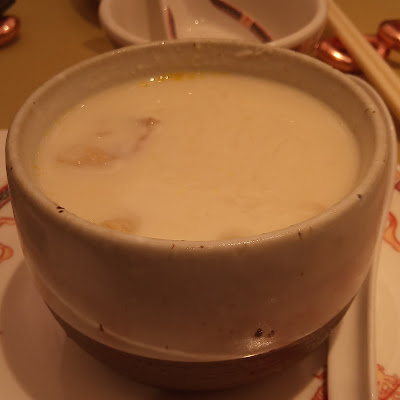04-006
Exotic food in a fine dining restaurant
I still remember his name. He is
called Larry, a colleague from my previous company. He is an American, came to
China just for a project. He flew to Hongkong first and I escorted him to
Shenzhen. That was 20 years ago, long before the pandemic, long before the
closing of the Chinese border.
We worked in a bank. The
schedule was tight so we worked from early morning till evening almost every day.
He is a funny guy. He is as old as my father and a good mentor. Working
together with him was a pleasure.
It happened on one rainy
evening. We were eating in a Japanese restaurant in Shenzhen, after a day of
hard work. He ordered a bowl of noodles, with pork. When the food came, he
shouted, “Hey! Help me. Take this thing away.” It was a baby octopus, marinated
in Japanese sesame sauce, cooked. “Why they put this thing here? I just ordered
noodles with pork!”
I was puzzled. In my eyes,
octopus is just normal food. I can’t say I eat octopus every day but octopus is
such a common food that you can find in almost any Asian restaurant. And it is also
a common practice for a restaurant to add some side ingredients into a dish. Just
like you would find cucumber inside a hamburger.
“These creatures eat themselves
when hungry!”, he explained.
When talking about exotic food,
we Chinese are champion. Yes, we eat everything. China is a big country. We
have Mongolians in the north who drink wine brewed inside the body of a rat. In
the west, we have in Sichuan fermented pork preserved for decades, with strong
smell. And people there eat it raw. Even in our capital, roast scorpions and
starfishes are common street food. And bat soup from Wuhan are highly suspected
as the origin of the COVID pandemic.
Being colonized by the British for one and a half decades, food from Hongkong seems to be more “civilized”. But still there are plenty of food here that are scary to many. Below is one of the examples.
CGCC Club is a Chinese fine
dining restaurant located in Central, the financial center of Hongkong. Location
of the restaurant is very convenience. The Stock Exchange is just a 5 minute
walk from the restaurant. It is a perfect place for business lunches, dinners
and general gatherings. Quality of service is unquestionable. Food served there
are in high quality and the price is, well, matching with what you got.
But having a pocket of cash does
not grant you a seat inside. The restaurant is opened only to the member of the
Chinese General Chamber of Commerce (CGCC). But business is still business. It
was late October, 2022. At that time, Hongkong was only half open to visitors.
Hotel quarantine was not required. But vaccination and PCR test were still
compulsory to enter Hongkong. As most countries and regions in the world were
already opted to a more relaxed travel restriction. Compare to other places, Hongkong
was not attractive to tourists or even business travelers.
“I can’t give you a table on the
6th floor as most bosses dine there. But I can give you a table on
the 8th floor if you don’t mind. Food are the same. Just the décor
is not as grand as that of the 6th floor.”, said the manager, after
knowing that we are not a member of the CGCC.
Business was not good. There
were only around 20 diners for the whole 8th floor in that evening.
And this is probably the reason why they accepted the reservation from a
non-member.
Apart from its exclusiveness and
food quality, CGCC Club is similar to most ordinary Chinese restaurants in the
city. We had Steamed Chicken, Sweet and Sour Pork, Tofu with mushrooms,
Vegetable pot, and Pickled cucumbers as appetizer. All the food we ordered were
just normal dishes that you can find in most Chinese restaurants in Chinatown,
except this one. What is it? Let’s take a closer look.
The soup is in white colour. It
has a strong smell of almond because the soup base is made by almond milk. It
smells very good. But apart from almond, what other ingredients were inside
this white colour soup? Let me show you.
Yes, chicken feet, err. But this
is only the first part. Look closer. Can you see the white lump next to the
chicken feet? What is it? Fatty pork meat?
No, it is not meat! It is lung!
Can you see the bronchial tubes? This is Pig Lung Soup in Almond Milk!
Most Western cuisines exclude
internal organs at all. Few may include tongue, liver or kidney. But lung is totally
out of the topic.
So, how much is this soup? It is
HKD $78 per bowl, which is around 10 USD. Ten dollars with some chunky lung
pieces in almond soup. I hope I did not scare you guys too much.
Yes, we eat everything.
Go back to the Lobby ...




No comments:
Post a Comment